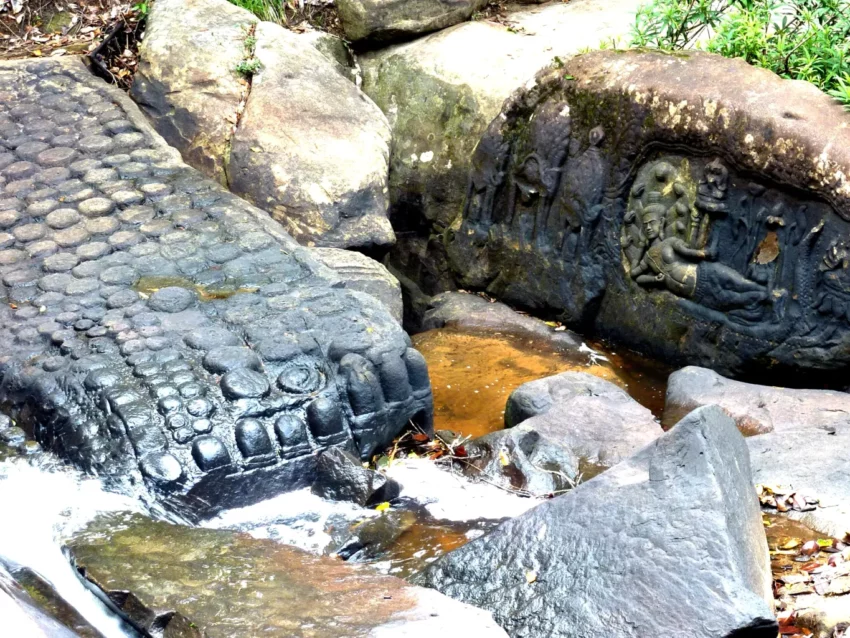Kbal Spean: The Hidden Carvings in Cambodia’s Riverbed
Kbal Spean, often referred to as the “River of a Thousand Lingas,” is a fascinating archaeological site in Cambodia. Situated on the southwest slopes of the Kulen Hills, it lies northeast of the Angkor temples in Siem Reap Province. The site is carved into a 150-meter stretch of sandstone along the Stung Kbal Spean River. It’s about 25 kilometers away from the famous Angkor Wat complex, making it a slightly off-the-beaten-path destination.
Get your dose of History via Email
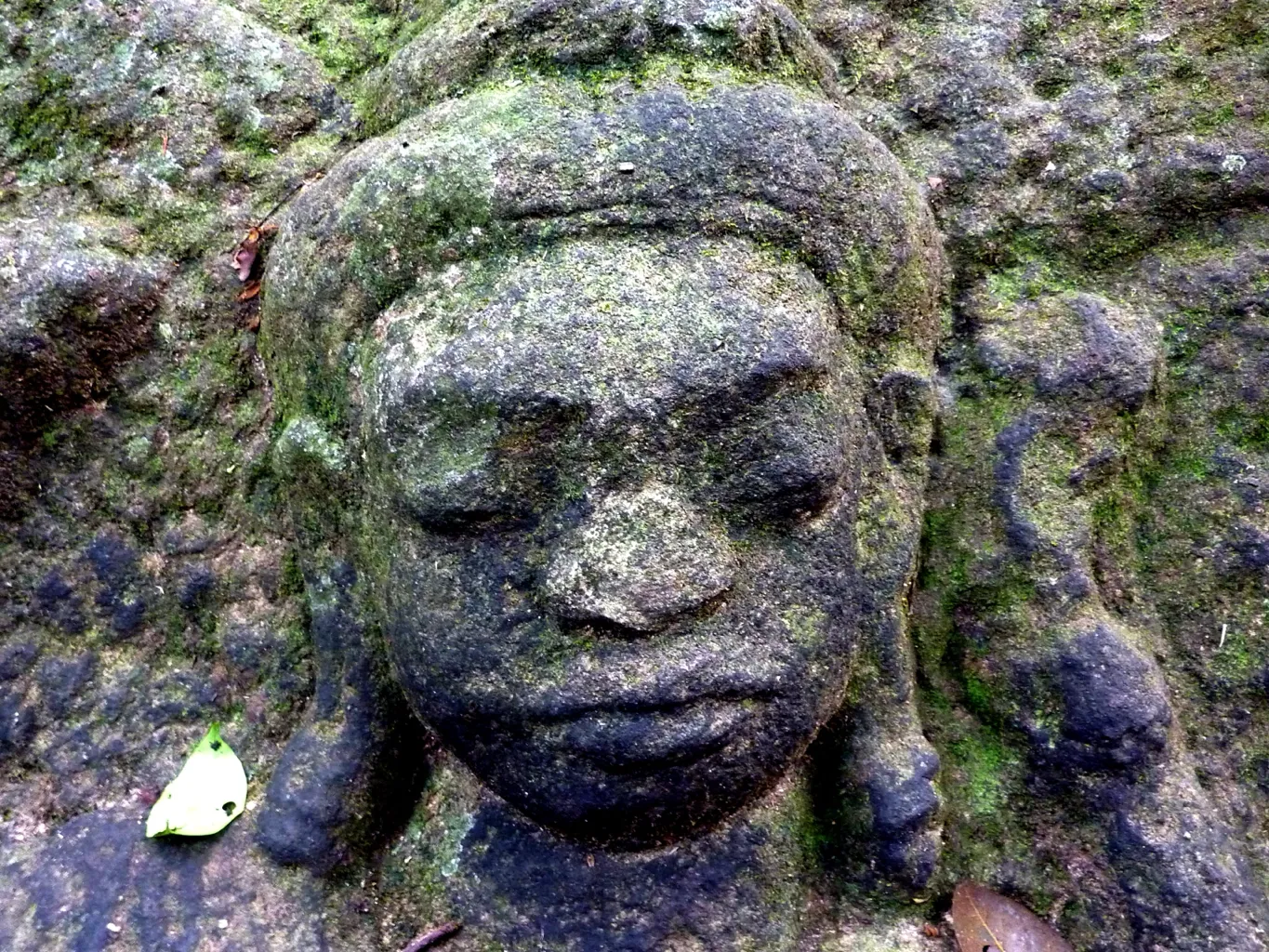
Ancient Carvings in the Riverbed
What makes Kbal Spean so unique is its stone carvings. These carvings, found both in the riverbed and along its banks, were created during the Angkorian era, around the 11th and 12th centuries. The most prominent motifs are the thousands of lingams, phallic symbols representing the Hindu god Shiva. These are neatly arranged in a grid-like pattern, covering the surface of the sandstone riverbed. You’ll also find intricate carvings of gods like Vishnu, Shiva, Brahma, and animals such as cows and frogs. The site has gained its reputation as a place of both spiritual and artistic significance.
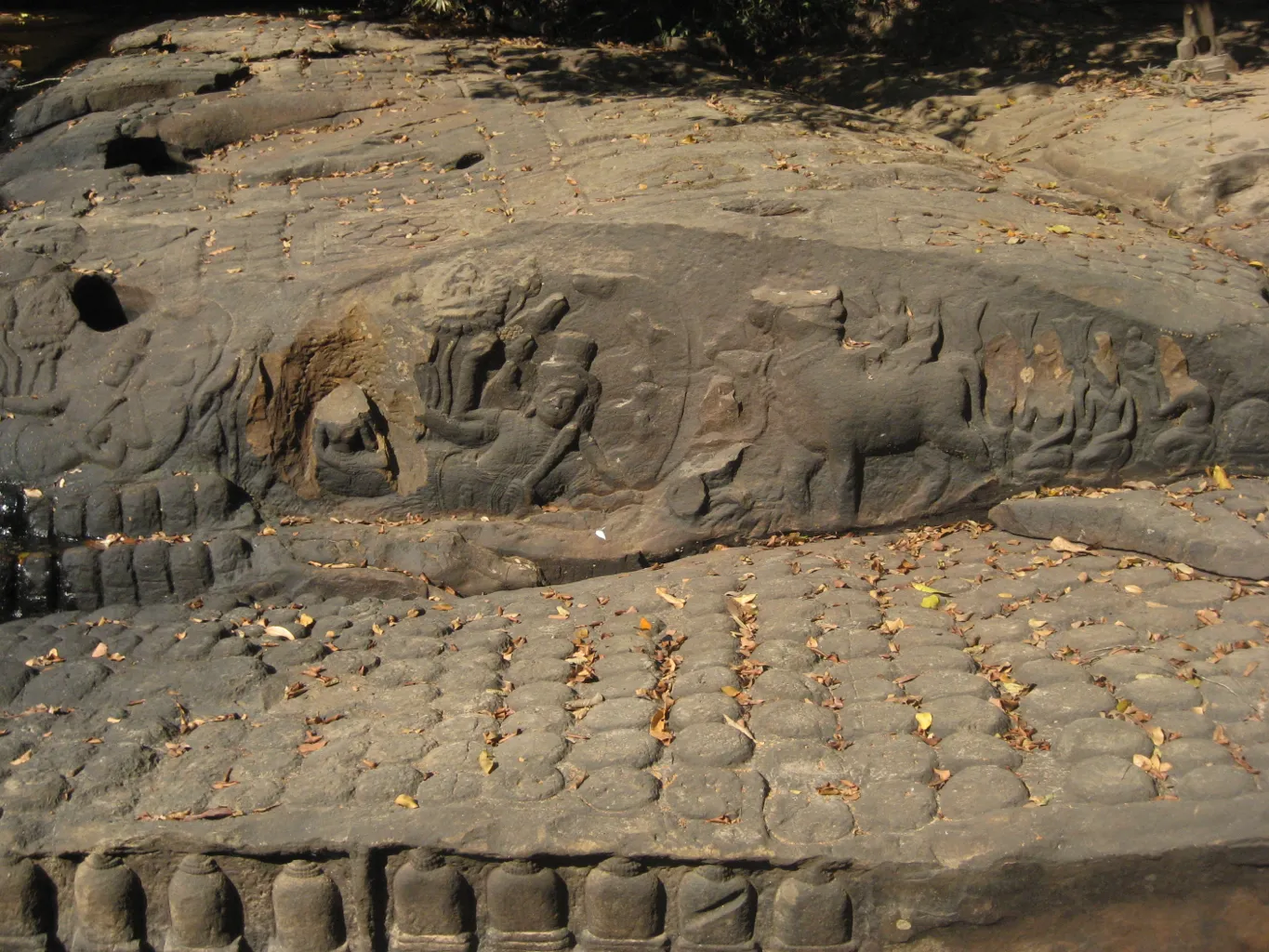
Geography and Access
The river itself, Stung Kbal Spean, is a tributary of the Siem Reap River. As the water flows over the sacred carvings, it is believed to become sanctified. This blessed water eventually reaches the Angkor temples before merging into Tonlé Sap Lake. The site is located deep in the Phnom Kulen National Park. Getting there involves a 40-minute walk through the forest, following a path that takes you to the first waterfall, where the carvings begin.
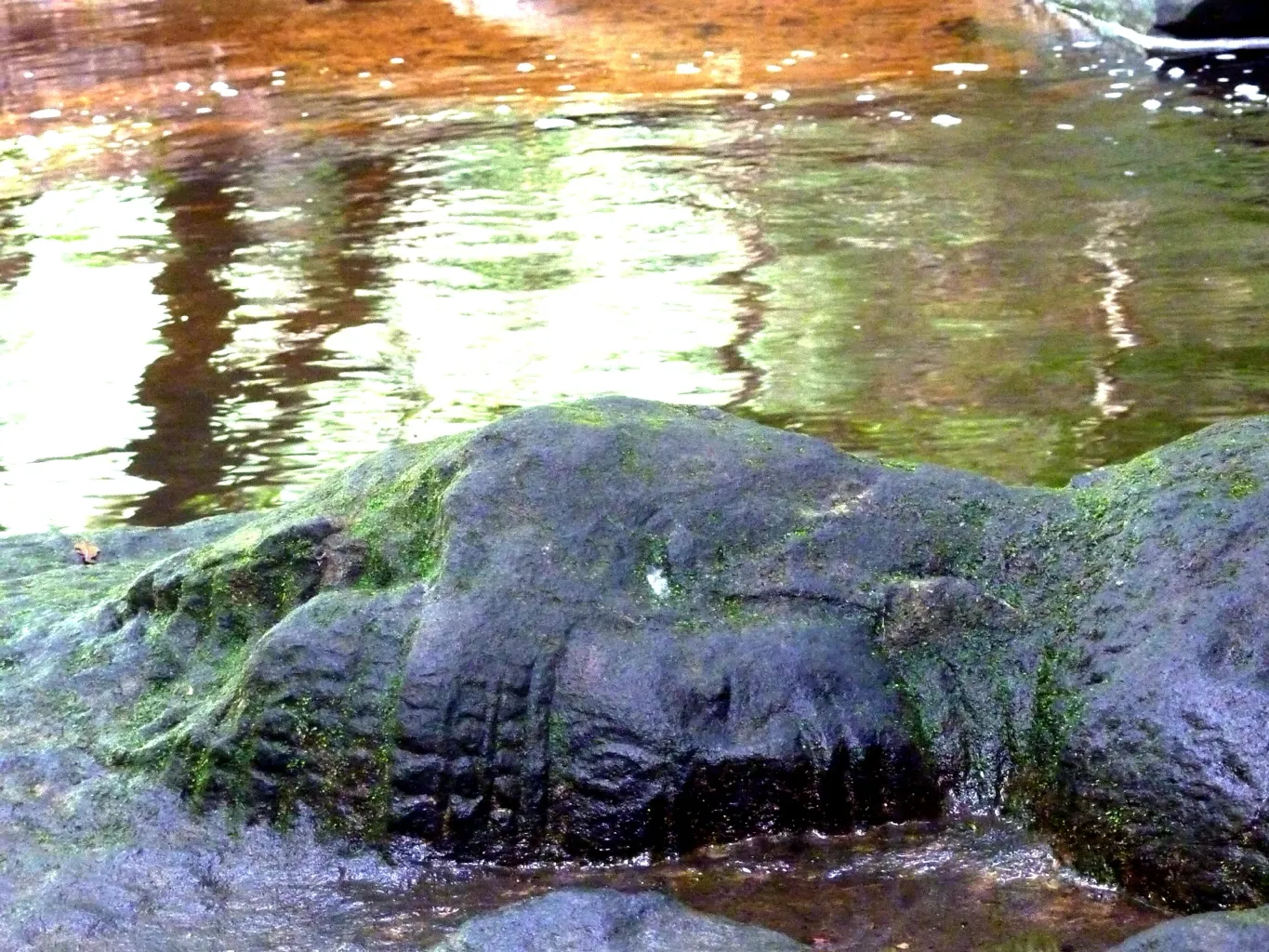
The sandstone riverbed, carved by natural forces, holds numerous depictions of Hindu mythology. Sculptures of Vishnu reclining on the serpent Ananta and Shiva with his consort Uma are among the most notable. The stretch of river continues for about 150 meters, where it eventually cascades into a pool, adding to the serene atmosphere of the place.
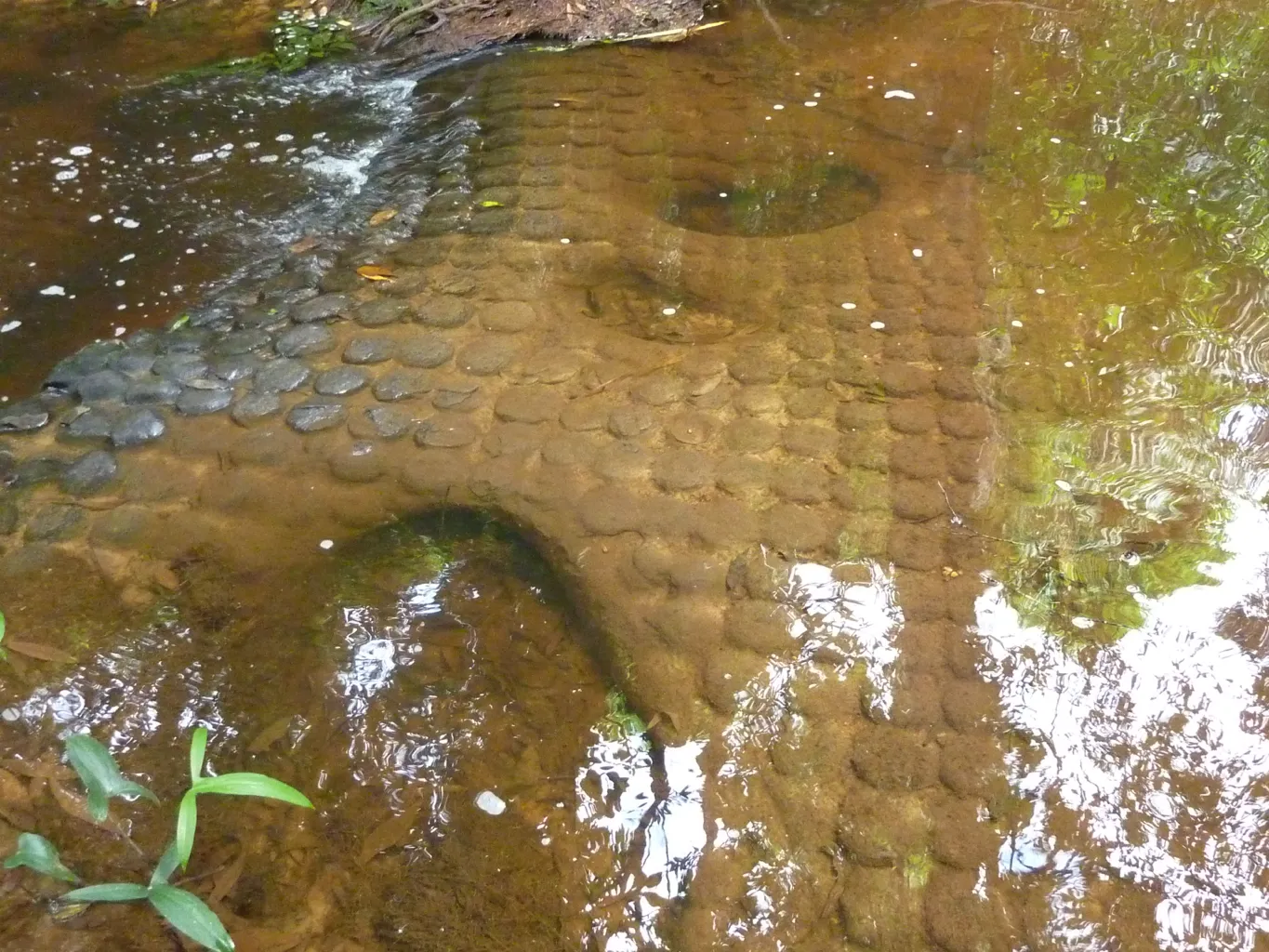
Historical Background
The origins of Kbal Spean’s carvings date back to the reigns of two significant kings: Suryavarman I and Udayadityavarman II. The 1,000 lingas were the work of hermits who lived in the area during the 11th century. Most of the other sculptures, however, were created during Udayadityavarman II’s reign in the 12th century. In 1059 AD, Udayadityavarman II consecrated a golden linga at the site, adding further spiritual significance to the area. The flowing river was seen as blessed by these lingas, and its waters were believed to carry sacred power downstream.
Although the site was discovered by French ethnologist Jean Boulbet in 1969, exploration was interrupted due to the Cambodian Civil War. It wasn’t until 1989 that Kbal Spean became safe to visit again.
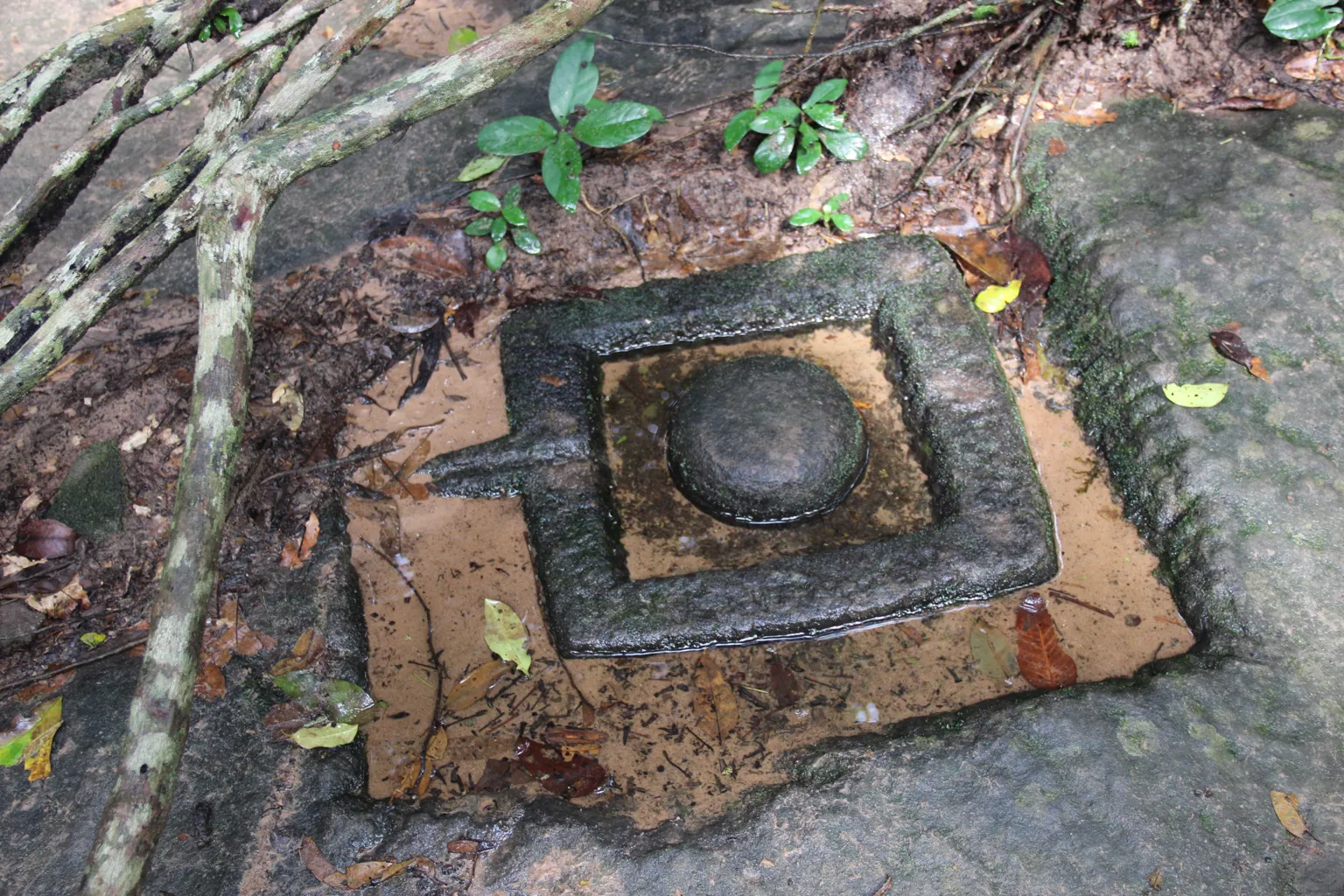
The Layout of Kbal Spean
As you walk along the path skirting the river’s natural stone bridge, you’ll encounter a sequence of sculptures. Near the bridge, Vishnu is depicted reclining with Lakshmi at his feet. Further upstream, carvings of Shiva and Uma riding a bull can be seen. About 30 meters downstream from the bridge, additional Vishnu carvings are found, and continuing on, you’ll encounter the famed Sahasra Lingas, or “Thousand Lingas.”
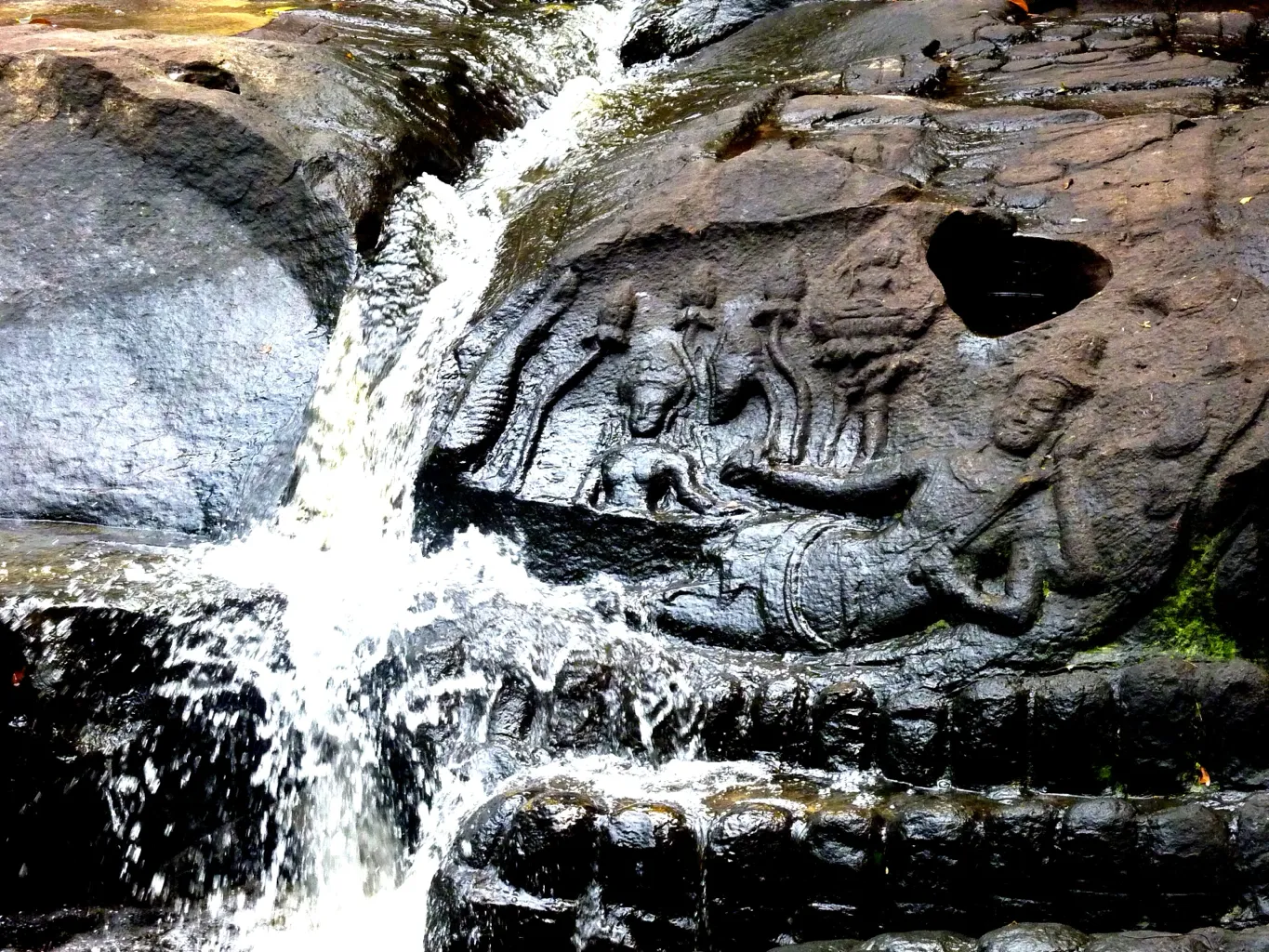
These carvings are etched into the coarse sandstone of the riverbed. The lingams are arranged in a precise grid pattern, each about 25 centimeters square and 10 centimeters deep. The river runs over these sacred symbols, adding to their mystique. After flowing over the lingams, the river drops into a clear water pool, further sanctifying the water before it moves downstream toward Angkor.
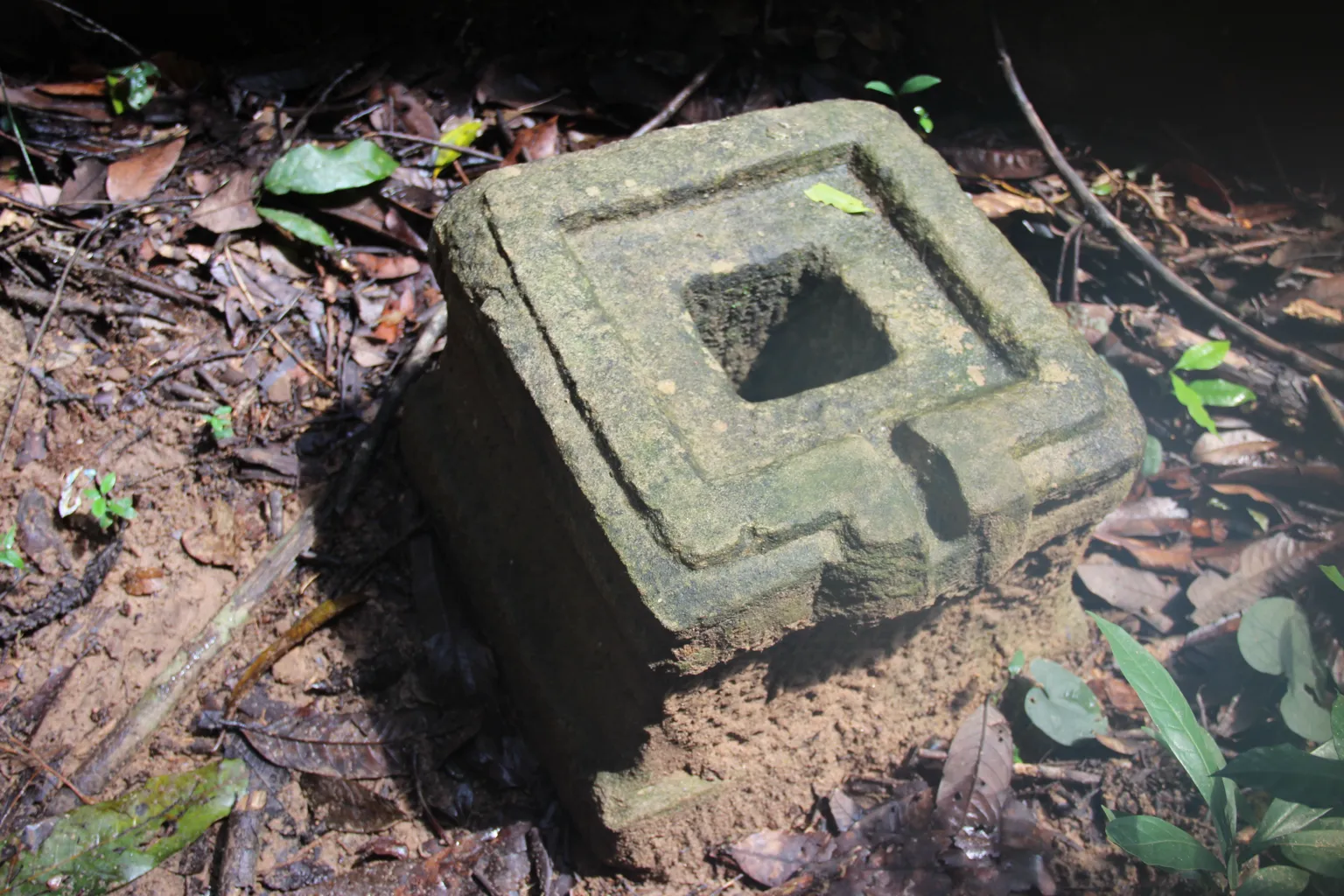
Sculptures and Symbolism
The carvings at Kbal Spean tell stories from Hindu mythology. One of the most common themes is the creation myth, represented by Vishnu lying on the serpent Ananta, with a lotus flower emerging from his navel. Brahma, the god of creation, sits on the lotus. Alongside these depictions, you’ll also see carvings of Shiva, often represented by lingams, reinforcing the site’s spiritual focus on creation and destruction.
Despite years of wear and vandalism, many of the carvings retain their original grandeur. Restoration efforts by Artisans d’Angkor have helped preserve the beauty of some of the more damaged reliefs.
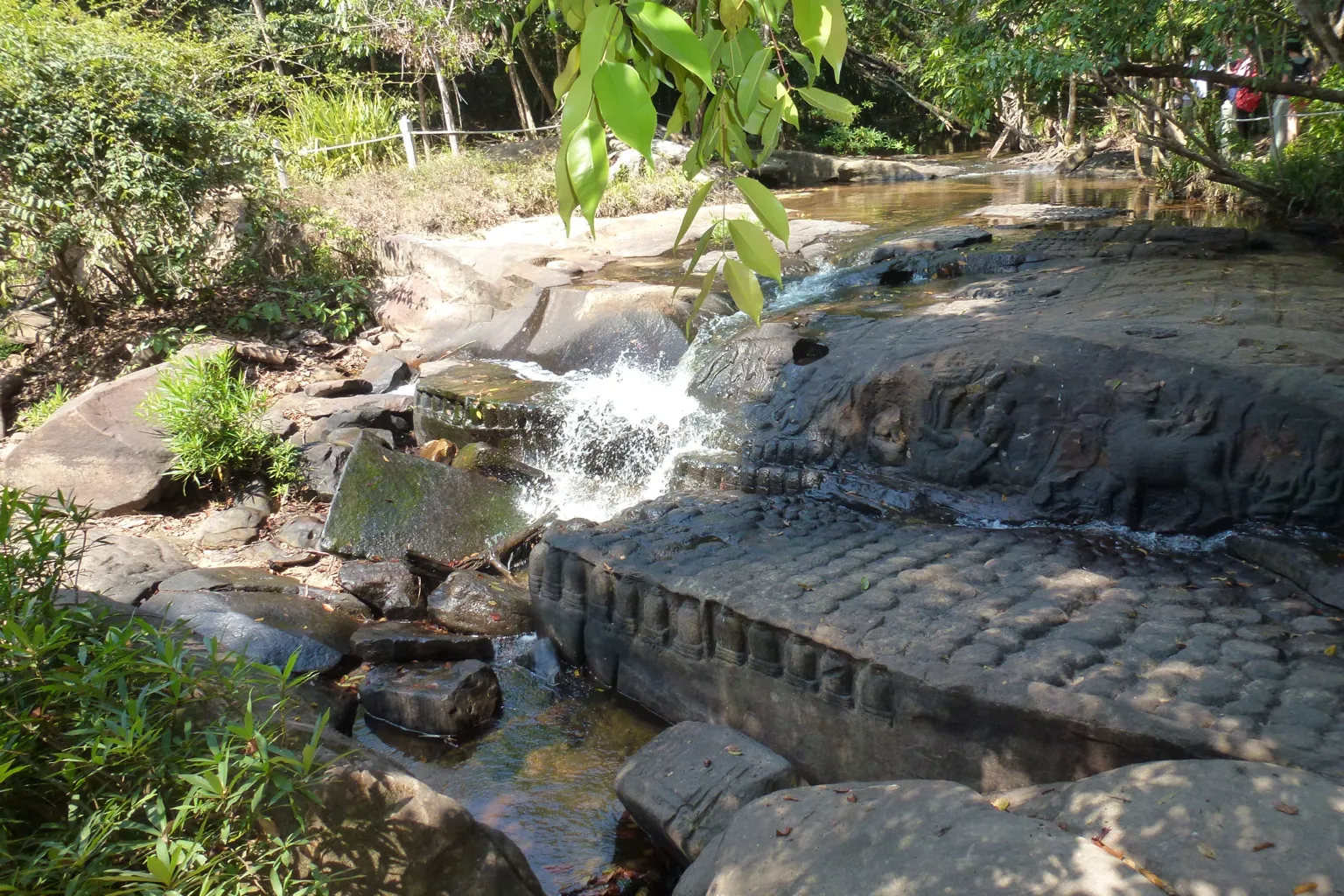
Biodiversity and Conservation
Kbal Spean is not only rich in history but also in biodiversity. Close to the river’s outfall lies the Angkor Centre for Conservation of Biodiversity. This facility focuses on rescuing and rehabilitating trafficked wildlife, adding another layer of importance to the area.
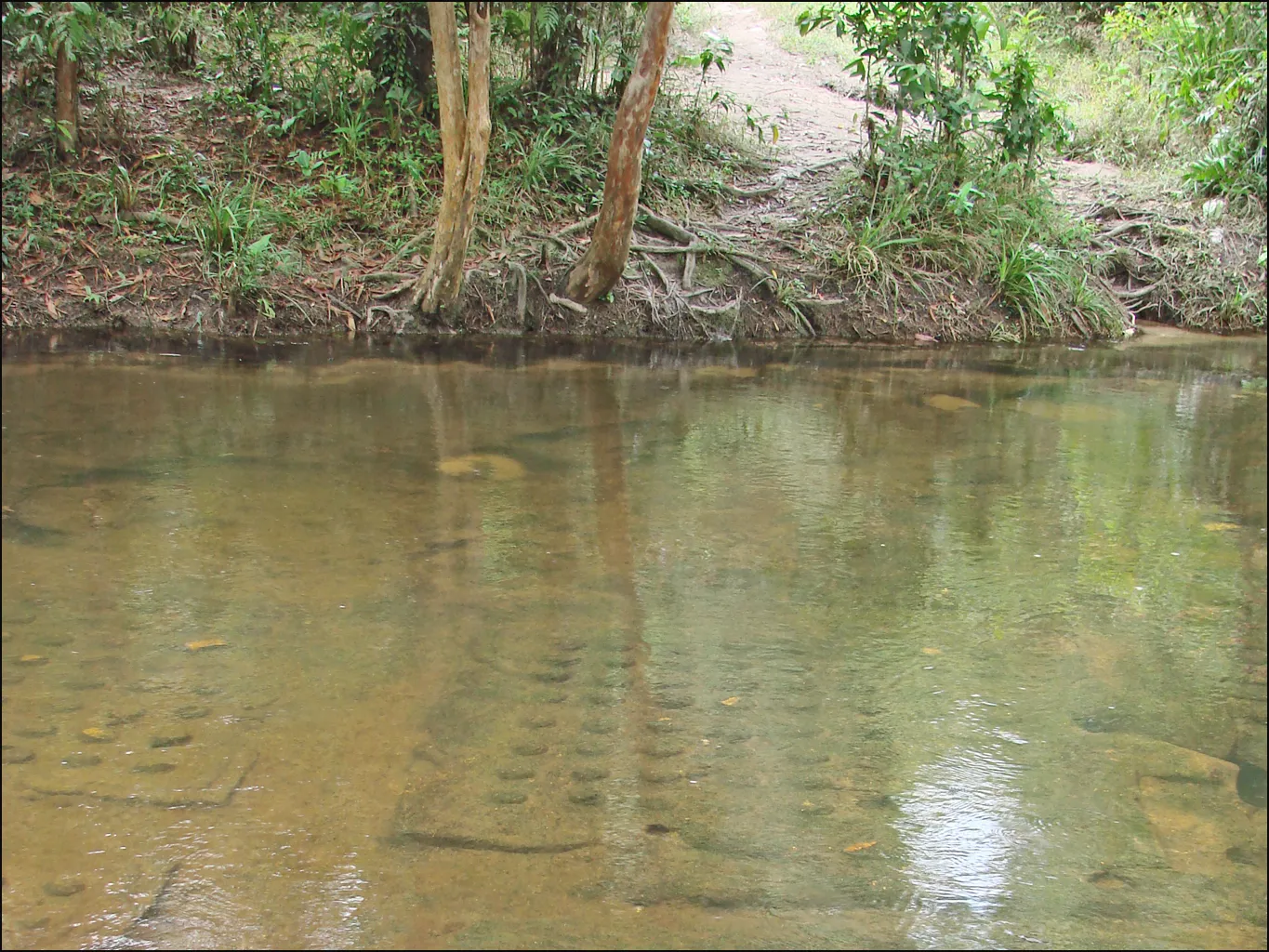
Conclusion
Kbal Spean is a hidden gem, offering both spiritual enrichment and artistic wonder. Its combination of history, mythology, and natural beauty makes it a must-visit for those exploring Cambodia’s rich cultural heritage. With every step along the carved riverbed, you’ll find yourself immersed in stories of gods, nature, and the passage of time.
Sources:

